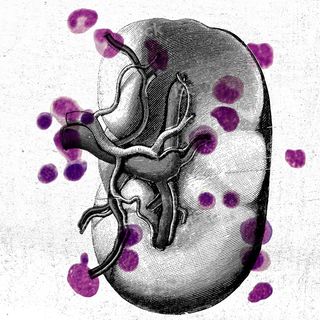
Trial Drug Reduces Recurrence of Genetic Breast Cancer in Women, New Study Shows
The BRCA1 and BRCA2 gene mutations account for about 10% of all breast cancer cases globally.

A trial drug was found to slow down and reduce the recurrence of genetic breast cancer in women with an early but aggressive form of the disease, a major study shows.
The BRCA1 and BRCA2 genes in women offer protection from getting certain cancers. But abnormal mutations in the gene, if inherited, increase an individual’s risk of breast and other cancers. BRCA1 and BRCA2 gene mutations account for about 10% of all breast cancer cases globally. In India, this number is higher, and a lack of awareness about the disease leads to a higher death toll from the disease.
“Women with early-stage breast cancer who have inherited BRCA1 or BRCA2 mutations are typically diagnosed at a younger age,” said Andrew Tutt, the lead author of the study, from the Institute of Cancer Research, London. For most, the risk of relapse persists.
Experts point out the “breakthrough” potential of the study published in the New England Journal of Medicine. Where there were previously no options to prevent recurrence of cancer in patients with these mutations, the drug reportedly increases the recovery and survival rate among women. Notably, the researchers conducting the study stopped the trial period early — in 2.5 years, as opposed to the initial 10 years — in light of the drug’s benefits. They also noted the advancementin cancer treatment bytargeting genetic sources.
Related on The Swaddle:
New Research Finds Pregnancy Offers Little Protection Against Breast Cancer Risk
The drug, named olaparib, was administered to 1,836 women during their post-treatment period — that is, after they had received rounds of chemotherapy or surgery. The aim was to determine the efficacy of the drug in preventing recurrence of cancer. During the trial, researchers found that the chances of recurrence of both invasive (cancer which spreads to the surrounding breast tissue) and distant (cancer which spreads to other parts of the body) types of disease were lower for those who took the drug, as compared to those who did not. After three years,86% of those treated with the drug were free of invasive breast cancer, compared with 77% given placebo pills.
The drug significantly decreased the relative risk of recurrence, second cancers, or death by 40%. These numbers are “clinically meaningful and practice changing,” Sayeh Lavasani, an assistant clinical professor at City of Hope’s Department of Medical Oncology & Therapeutics Research, who wasn’t involved in the trial, told Biopharma Dive.
The findings are also important in the context of ramping up genetic testing among women. It is possible to test for the BRCA1 and BRCA2 mutations early on, depending on certain risk factors among women. For early detection of hereditary breast cancer, especially in young women with a history of mutations, screenings can begin at the age of 25. Given that breast cancer in young women is aggressive and that this demographic is more likely to have the BRCA mutation, better awareness about breast cancer is recommended as a means of controlling the cancer in young women. By increasing breast MRIs, “cancer incidence and mortality in women with a BRCA1 or BRCA2 mutation could be reduced,” concluded one study.
Among women, breast cancer is the second-leading cause of cancer-related death — and scientists say better early cancer detection makes a big difference.
The research on the drug was collaboratively conducted by the Breast International Group along with various global organizations. The drug’s clinical trial was funded by AstraZeneca outside the United States and by NRG Oncology in the United States.
“Up to now, there has been no treatment that specifically targets the unique biology of these cancers to reduce the rate of recurrence, beyond initial treatment such as surgery, hormone treatment, radiotherapy and chemotherapy,” Tutt added.
The trial did not observe adverse or unexpected side effects outside the known side effects associated with olaparib.
More research is, however, needed to study the recovery of patients taking the drug. There is also no comparative study yet between this drug and chemotherapy in the long run. Further, the drug is part of a range of pharmaceutical offerings that are on the higher side cost-wise — making affordability and access a challenge.
For now, the drug offers a promising outcome. “Finishing active hospital treatment can be an incredibly difficult time, with many women calling our helpline to share their anxiety and fears of their breast cancer coming back,” said Dr. Simon Vincent, director of Breast Cancer Now, who took part in the study. “Finding effective new ways to prevent recurrence is vitally important.”
Rohitha Naraharisetty is a Senior Associate Editor at The Swaddle. She writes about the intersection of gender, caste, social movements, and pop culture. She can be found on Instagram at @rohitha_97 or on Twitter at @romimacaronii.
Related


Escapism Is a Way to Cope Under Stress. But It Can Also Become a Tool for Self‑Deception
